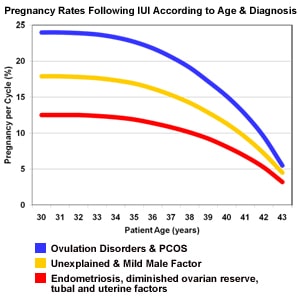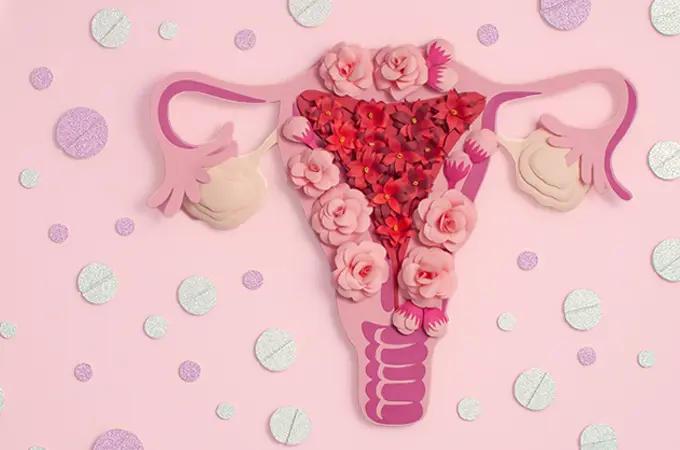For many people, the phrase “infertility treatment” sparks the instant thought of in vitro fertilization (IVF). However, in reality, around 50 percent of all treatment cycles performed at Shady Grove Fertility are considered more basic than IVF. These treatments are called “low-tech.” In fact, depending on the age and diagnosis of a patient, low-tech infertility treatments, such as intrauterine insemination (IUI), are often the first treatment approach.

What low-tech infertility treatments are available?
Depending on your diagnosis and medical history, there are three low-tech infertility treatments available to patients:
- Timed Intercourse
The simplest treatment option available, timed intercourse helps a couple predict when the woman will be ovulating and the best time to conceive. - Ovulation Induction
For women who may not ovulate regularly, oral medication is often prescribed to help stimulate the ovaries to produce eggs. Ovulation induction is often paired with timed intercourse or intrauterine insemination. - Intrauterine Insemination (IUI)
IUI is the process whereby a concentrated sperm sample is placed inside the uterus. IUI is often recommended for patients who are using donor sperm or those diagnosed with mild male-factor infertility, irregular ovulation, a single blocked Fallopian tube, or unexplained infertility.
How successful is IUI?
In discussing the “typical” success rate for IUI treatment, it’s important to know what the average fertile couple’s chance of pregnancy is on any given month. For couples that do not have difficulty achieving a pregnancy and are engaging in regular intercourse without contraception, the chance of pregnancy per month of ovulation is largely dependent on the age of the woman. For women up to the early-30s, the natural pregnancy rate is about 20 to 25 percent per cycle. This declines significantly through the mid and later 30s, and by the early 40s, the chance of pregnancy is about 5 percent per cycle. This age-related decrease in the chance of a natural pregnancy is due primarily to a decline in the quality of the eggs within the ovaries.
The goal of IUI is to help patients achieve a pregnancy at rates that are closer to the rates experienced by patients in the same age group and that do not have infertility.
As the chance of pregnancy per IUI treatment cycle is modest, it may take more than one cycle of treatment in order to achieve a pregnancy. The chance of pregnancy with IUI declines slightly (by approximately 2 to 3 percent) with each consecutive unsuccessful treatment cycle. Therefore, if there has not been a pregnancy after 3 to 4 cycles of treatment, it may be advisable to move to more advanced treatments such as IVF.
Conversely, if a patient has conceived in the past with IUI treatment, her chances of conceiving again with IUI is much higher than average. Therefore, women who have had pregnancies with previous IUI attempts are generally good candidates for repeat IUI treatment.
Because the chance of pregnancy with IUI for women over the age of 40 is low, and because fertility is declining rapidly at this age, a physician may advise patients to move to IVF treatment earlier in the treatment timeline.
Low-Tech Infertility Treatments: Pregnancy Rates by Diagnosis

In addition to female reproductive age, a couple’s prognosis for success with IUI depends on their diagnosis. This treatment is most successful in couples where the primary cause for infertility is ovulatory dysfunction (or failure to regularly ovulate, as in women with PCOS). In these cases, the treatment comes closest to restoring the natural per cycle pregnancy rate.
IUI is also quite successful for the treatment of mild male factor or unexplained infertility, although the success rates are slightly lower for those couples where ovulatory dysfunction is the only problem.
IUI is less successful if the cause of infertility involves diseased Fallopian tubes, endometriosis, decreased egg quality, or uterine factors such as uterine fibroids as this treatment does not improve the quality of the eggs within the ovaries or correct any anatomical abnormalities.
Our philosophy at Shady Grove Fertility has always been to tailor our patients’ treatment to their specific diagnoses and circumstances. Our goal is to make sure our patients achieve the best possible chance of success with using the simplest and most cost-effective approach.
To watch our On-Demand Webinar on Low-Tech, click here. During this free, on-demand event, viewers will learn more about who is a good candidate for low-tech treatment, how ovulation induction (OI) and intrauterine insemination (IUI) work, and the success rates associated with these treatment options.
For more information on low-tech infertility treatments, or to schedule an appointment with one of our physicians, please speak with one of our friendly New Patient Liaisons by calling 877-971-7755.
Editor’s Note: This post was originally published in October 2014 and has been updated for accuracy and comprehensiveness as of April 2019.






